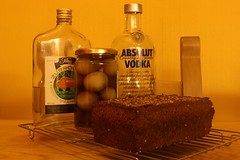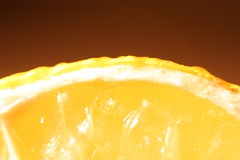...and then there was one
Its been lovely and sunny here for the past couple of days, so I went to the apiary for a quick look.Poly seems to be doing ok - not that much activity, but plenty of bees in the hive, lots of stores and still some sugar bags, so it all looks ok.
However Heather is no more… no signs of life, so opened up the hive to discover a lot of dead bees, and streaks of dysentry stained all over the tops of the frames. I’m hoping that this is just ‘one of those things’, as it was a weaker colony with a late supersedure queen, but there’s always a chance that its Nosema Ceranae. I’m planning to send off samples to SASA for analysis in case its something more serious.
In the mean time I’m investigating how best to clean polystyene hives - acetic acid /should/ be ok, but there’s always a chance that it might damage them, so I’m hunting for more info.
Read more...


